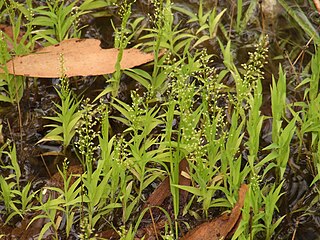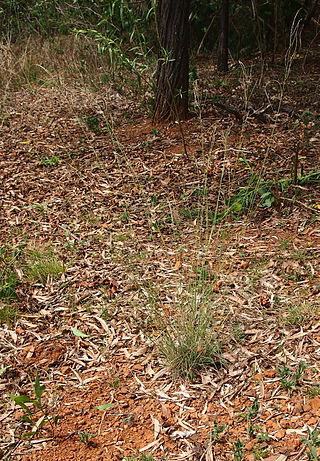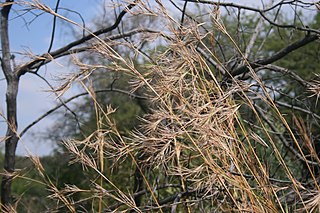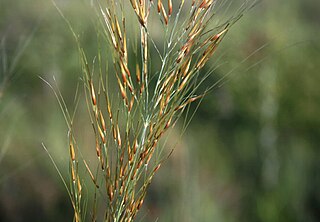
Cenchrus is a widespread genus of plants in the grass family. Its species are native to many countries in Asia, Africa, Australia, the Americas, and various oceanic islands.

Deschampsia is a genus of plants in the grass family, commonly known as hair grass or tussock grass. The genus is widespread across many countries.

Bothriochloa is a common and widespread genus of plants in the grass family native to many countries on all inhabited continents and many islands. They are often called beardgrass, bluegrass or bluestem. Some species are invasive in areas where they have been introduced.

Helictotrichon, or alpine oatgrass, is a genus of perennial flowering plants in the grass family. The genus name comes from the Greek heliktos meaning twisted, and trichos meaning hair, referring to the shape of the awn.

Setaria is a widespread genus of plants in the grass family. The name is derived from the Latin word seta, meaning "bristle" or "hair", which refers to the bristly spikelets.

Leersia is a genus of plants in the grass family which includes species known generally as cutgrasses.
Phacelurus is a genus of African and Eurasian plants in the grass family.
Poecilostachys is a genus of African plants in the grass family, several of the species found only in Madagascar.
Alloeochaete is a genus of African plants in the grass family.

Coelachne is a genus of Asian, African, and Australian plants in the grass family.

Stenotaphrum is a widespread genus of plants in the grass family.

Parapholis is a genus of Eurasian and North African plants in the grass family.

Elionurus is a genus of Asian, African, Australian, and Neotropical plants in the grass family.

Urochloa is a genus of plants in the grass family, native to Eurasia, Africa, Australia, Mexico, and the Pacific Islands. Common names include signalgrass.

Leptochloa is a widespread genus of Asian, African, Australian, and American plants in the grass family.

Melinis is a genus of African and Arabian plants in the grass family.

Rhytachne is a genus of plants in the grass family. They grow principally in wet savannahs in Africa and the Americas. More specifically, they tend to prefer transitional zones between marshes and drier upland savannahs. In the Americas, the genus can be found from southern Mexico and Cuba south to northern Argentina, while in Africa it is present in Sub-Saharan Africa, including in Madagascar. Twelve species are included, of which nine are African, two are American, and one, Rhytachne subgibbosa, is found on both continents. The genus is closely related to Coelorachis.

Hyperthelia is a genus of African plants in the grass family.

Loudetia simplex is a grass species found in tropical and Southern Africa and Madagascar. It was originally described as a Tristachya species by Christian Gottfried Daniel Nees von Esenbeck in 1841 and was transferred to Loudetia by Charles Edward Hubbard in 1934.
















